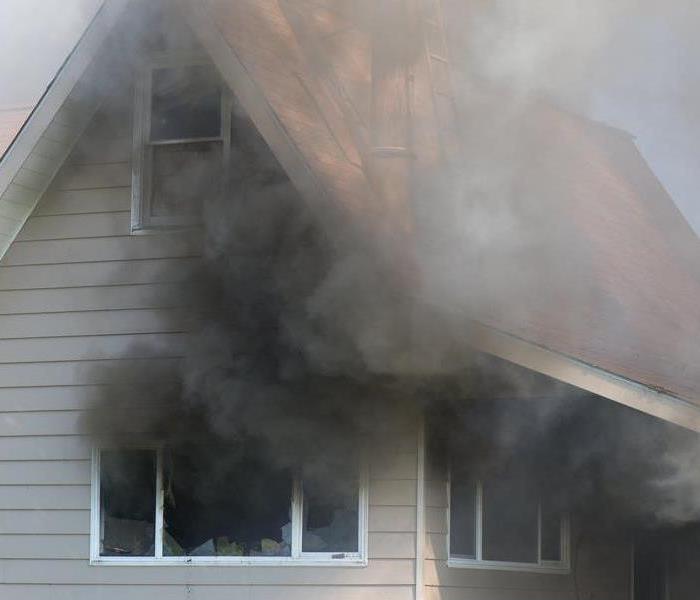Soot Webs: What Are They and How to Get Rid of Them?
4/10/2023 (Permalink)
Have you ever noticed a black, cobweb-like substance accumulating around the ceilings, walls, and corners of your home? This is known as soot webs, and they can be a nuisance to clean up. Soot webs are not only unattractive, but they can also be a sign of a more significant problem with your home's heating system. In this blog post, we will discuss what soot webs are, what causes them, and how to prevent them from forming.
Soot webs are not actual cobwebs, but rather they are a collection of fine black particles that have accumulated due to incomplete combustion of fossil fuels such as oil, gas, or wood. These particles are tiny, measuring less than 1 micron in diameter, and are invisible to the naked eye. When they accumulate in large enough quantities, they can create the appearance of a cobweb.
Inefficient Heating
One of the main causes of soot web formation is an inefficient heating system. When fossil fuels are burned, they release a variety of byproducts, including water vapor, carbon dioxide, and particulate matter. Incomplete combustion can result in the release of soot, which can then accumulate on surfaces throughout your home.
Other factors that can contribute to soot web formation include a dirty furnace or boiler, a clogged chimney, and poor ventilation. When your heating system is not functioning properly, it can lead to incomplete combustion of fossil fuels, which in turn can lead to the formation of soot webs.
Underlying Issue
If you notice soot webs in your home, it is important to address the underlying issue promptly. Ignoring the problem can result in more severe issues, including a potential fire hazard. To prevent the formation of soot webs, regular maintenance of your heating system is crucial. This includes regular cleaning of your furnace or boiler, as well as regular chimney cleaning.
Improve Ventilation
You can also take steps to improve the ventilation in your home. This includes opening windows and doors to allow fresh air to circulate and using exhaust fans in areas where moisture is prevalent, such as the bathroom and kitchen.
It is also important to ensure that you are using the correct type of fuel for your heating system. Using a fuel that is not recommended for your particular system can result in incomplete combustion and the formation of soot.
In conclusion, soot webs are a common issue that can be caused by an inefficient heating system, poor ventilation, and the use of incorrect fuel. Regular maintenance of your heating system and proper ventilation can help prevent the formation of soot webs in your home. If you do notice soot webs, it is important to address the underlying issue promptly to prevent any potential fire hazards.




 24/7 Emergency Service
24/7 Emergency Service
